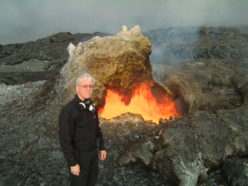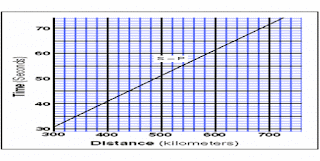From personal experience, when a really big earthquake hits, it is extremely unnerving. In fact, my first earthquake was a magnitude 7.3 event in Southern California, and the serious shaking lasted not much more than 3 minutes.However, it seemed like a lifetime to me then. If asked a week later, I probably would have said that it lasted at least a half an hour.
Look at the following diagram, taken from Wikipedia:
The P is what woke me up. It hit with a bang.
The S is what rattled and then broke the windows, and stutter-walked my bed 30 cm across the floor.
The R is what finally flipped me out of my bed and onto the floor.
It took several days for the information on this event to filter down through the scientists to the government entities, to the news media, to my parents, and then to me as a 6-yr-old child. By then we were back in our house, the power was restored, and we had water pressure again.
A Cascadia subduction earthquake might reach a moment magnitude 9+ when it next occurs. That will be nearly 100 times more energy than the piddly 7.3 event that launched a sleepy 6-yr-old out of his bed in Bakersfield, California long ago. If I found a M=7.3 event to be that terrifying, imagine how bad a M=9+ event might feel like.
There are two ways to deal with the terror:
#1. Understand immediately what is happening and what will come next.
#2. Be prepared for it. In other words, know that you have your bases covered.
#2 is something that many people more or less do (some do OK, some do better, and some do extremely well at this):
A. Have a family plan in place. Where do we meet? What channels on the battery-powered, $40 hand-held walkie-talkies will we be using to find each other?
B. Have supplies at hand, including
i. Food. And don’t count your refrigerator contents here.
ii. Water. A LOT more water than you might think.
iii. A battery-or-crank-powered Radio
iv. Batteries. Flashlights. LOTS of batteries.
v. Blankets and sleeping bags, and/or a heat source to keep warm.
C. Start checking up on your neighbors, and offer to share your stuff with them. People you may hardly know will become life-long friends really quickly.
However, the purpose of THIS blog entry or chapter is to help you deal with #1: understand what in the world is going on, so you don’t go crazy.
Next, look at the following diagram:
This will help you to understand the TIMING difference between the several kinds of seismic waves. The P wave arrives with a bang, like someone with a large hammer just whacked one side of your house. The S wave will feel different: slewing everything back and forth, perpendicular to a line between you and the epicenter of the earthquake. The R (which stands for Raleigh, or surface) waves will feel to you like you are in a small skiff after a large boat roars past, careless of his wake. You will feel like you are rolling around, up and down, and sideways . You always end up pretty much in the same place with each complete roll.
All these things are important clues for you. This is what you do:
FIRST: as soon as the P-wave hits, look at your watch… which we both hope includes a second hand.
Second: as soon as the S-wave hits, think about what direction is PERPENDICULAR to that sickening side-to-side motion: this gives you the important clue as to where this thing is coming from. If the slewing motion is north-south, then the earthquake epicenter is either east or (more likely in this case) west of you.
Third: as soon as the S-wave hits, look at your watch again. Subtract the P-wave arrival time in seconds from the S-wave arrival time. That difference tells you how far away the hypocenter (the actual sub-seafloor rock rupture) is from you.
Use the following diagram to convert that P-S time difference into a distance::
Fourth: KEEP TRACK OF THE TIME even after you have this number. If the event is a M=9+ event, the ground will keep shaking and heaving for a full 5 – 6 minutes. THIS will give you a sense of how bad things will be in the following several weeks. If it was just a segment of the Cascadia Subduction Fault breaking, then the time could be as little as 3 – 4 minutes. This is GOOD. If the heaving and shaking runs up to 6 minutes… well, you already have #2 above in place, right? So you are prepared.
This will help: If you live in Portland or Seattle, and the P-S time difference is 20 – 45 seconds, then the event is far enough away (or close enough, depending on your point of view) to be The Big One: A Cascadia Subduction Event.
But YOU WILL ALREADY UNDERSTAND WHAT IS GOING ON even before the first news reports start coming in (assuming you have a flashlight close and a battery-powered radio on hand).
AND YOU HAVE YOUR PREPARATIONS IN PLACE.
And no, you are not crazy: you are informed and prepared.



